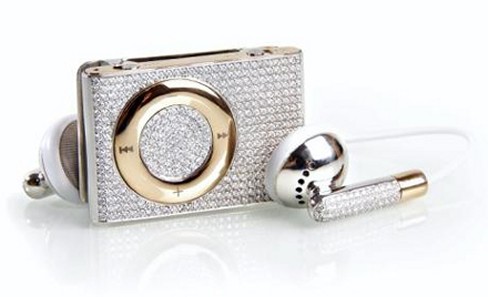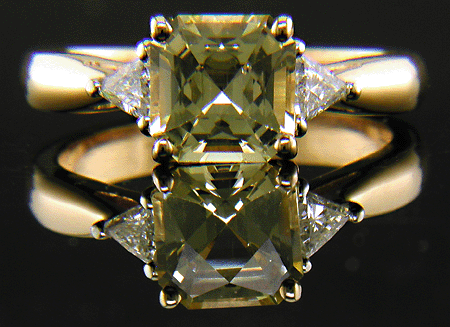Fancy Colored Diamonds - Irradiation Treatments and More
By [http://ezinearticles.com/?expert=Sandra_H_Carter]Sandra H Carter and Chris R Carter
Natural colored diamonds are an amazing example of nature's rare beauty. There are a few ways in which diamonds can become different colors naturally. One way a diamond can become colored is by a separate element replacing some of the carbon molecules as the diamond is being formed. For example when nitrogen is present during the formation of a diamond, the nitrogen molecules will bond with the carbon molecules giving the diamond a yellow or light brown color. Although in most white diamonds nitrogen is considered a flaw, when there is enough of it to give the diamond an even and consistent color, the gem's value and desirability is significantly increased. When the element boron is present during formation, the diamond can acquire a blueish green hue. The compression of a diamond can some times make it a red or orange color. Another way for a diamond to naturally become colorful is  through natural radiation. Natural gamma rays or isotopes can sometimes knock carbon atoms off of the diamond lattice to create voids in the diamond which usually emit a blueish color.
through natural radiation. Natural gamma rays or isotopes can sometimes knock carbon atoms off of the diamond lattice to create voids in the diamond which usually emit a blueish color.
Natural fancy colored diamonds are extremely rare. There are currently less than ten natural red diamonds on the market for sale. The largest of these is 5.11ctw and recently sold for over $8,000,000, or around $1.5 million per carat, well out of reach for most of us. Luckily for us, there is a way to create gorgeous colorful diamonds by reproducing in a lab what nature takes millions of years to accomplish.
The most common form of creating fancy colored diamonds is irradiation treatment similar to that which also occurs in nature. To do this, the diamond is bombarded with gamma rays, or neutrons and electrons, knocking carbon atoms off of the lattice, and thereby creating blue or green colored centers. All diamonds that are irradiated in this manner become a blueish-green or black color. After the diamond receives the irradiation treatment it can also be heat and pressure treated to create other colors such as brown, yellow, pink or orange. Fancy colored diamonds created by using this second treatment are usually referred to as being 'annealed,' meaning that they have been subjected to very high pressure and high temperature, causing the carbon lattice to deform and different hues to emerge.
Sometimes violet and other fancy colored diamonds have been subjected to certain dyes to create their colorful appearance. Many dyes or surface covers are vacuum sealed on the diamond, however all surface treatments and dyes can be removed, most with alcohol or sulfuric acid, or the color will simply fade over time. This is one of the many reasons why irradiated diamonds have become increasingly popular in the jewelry industry.
The majority of colored diamonds on the market have been irradiated or treated in some other way. Since the diamonds that are used to create fancy colored diamonds generally are those with a less appealing color naturally, irradiated and color-enhanced diamonds are quite affordable. This has made brightly colored diamonds available to the average consumer, and inspired creativity and uniqueness in many stunning jewelry designs. Their popularity is constantly growing and colored diamonds have transformed from a jewelry trend to a classic look desired by many.
Sandra Carter and her husband, Chris, own an online jewelry store specializing in Gold, Silver, Diamond, and Gemstone Jewelry. Visit CarterTradingCo.com for great deals on [http://www.cartertradingco.com/coloreddiamondcollection.html]fancy colored diamond jewelry and 10% OFF to new customers! Also visit us for more [http://www.cartertradingco.com/jewelryinfo4.html]about diamonds and other jewelry info.
Article Source: [http://EzineArticles.com/?Fancy-Colored-Diamonds---Irradiation-Treatments-and-More&id=3410654] Fancy Colored Diamonds - Irradiation Treatments and More
Wednesday, December 23, 2009
Fancy Colored Diamonds - Irradiation Treatments and More
Posted by Nevena at 5:33 AM
Labels: colored diamonds
Subscribe to:
Post Comments (Atom)



















0 comments:
Post a Comment